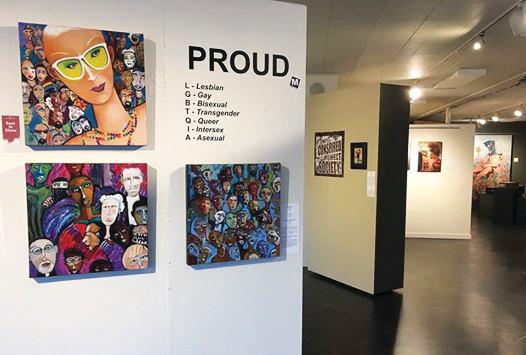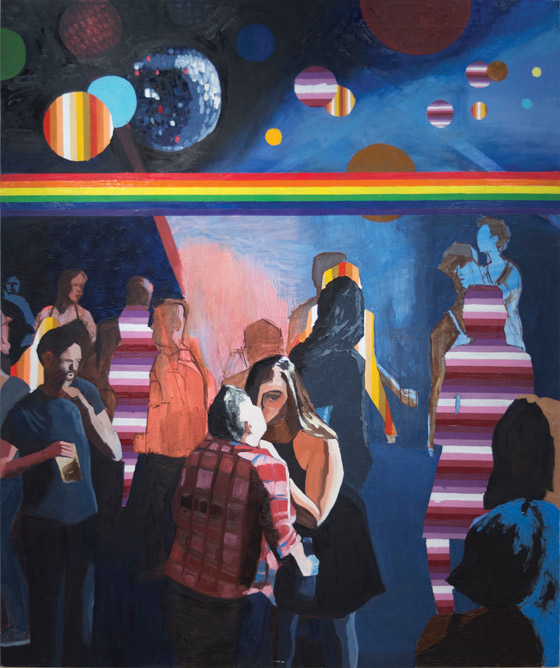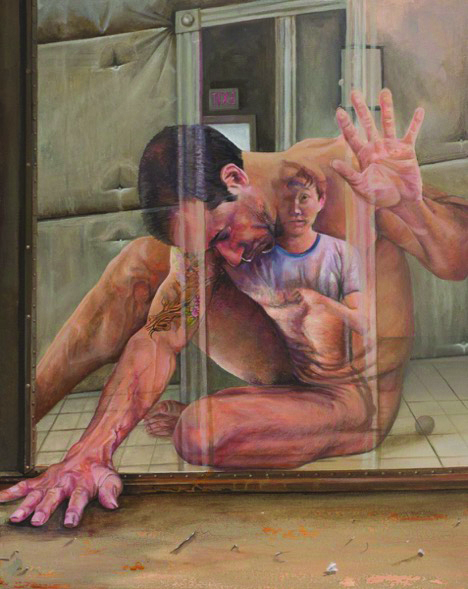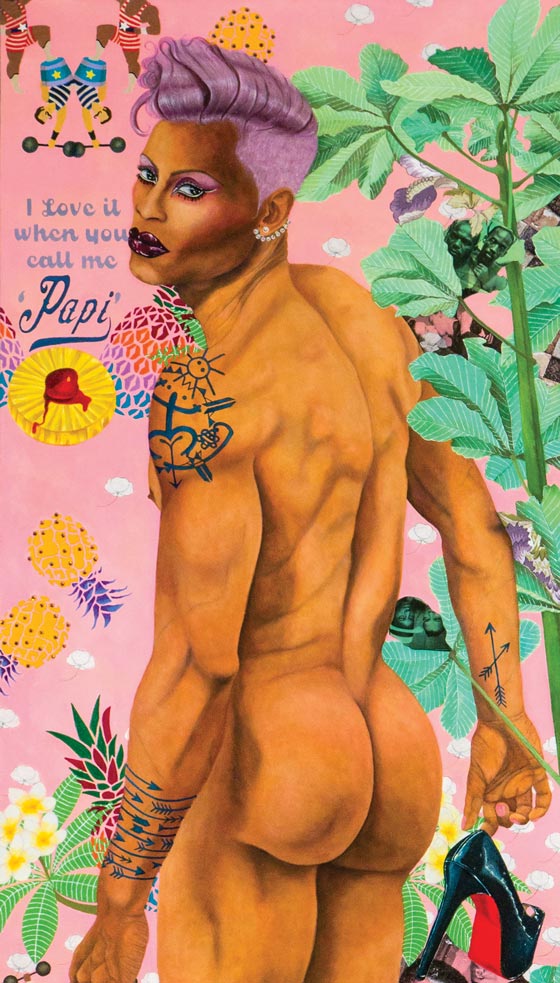by joel martens –

The Studio Door began its life in North Park, the 2014 brainchild of artist Patric Stillman. What started as a personal studio space for him evolved and matured into the current iteration housing 16 artists, a contemporary art gallery, an art center with workshops, a museum store with affordable gifts and a pop-up event space with over 1,600 artists participating in exhibits and workshops inside its walls.
Stillman spoke of the impetus for the studio space and how it evolved. “The gallery started as a space that I could create in and surround myself with talented creatives who would lift each other up,” he shared. “Selling my art and helping others to do so became the foundation of the business model and I found myself surprised by the supportive community who also wanted these things. Together, we have been able to keep The Studio Door evolving.”
Evolve it did, the gallery/studio recently relocated to a new Hillcrest location. Stillman shared his reasons for the move. “As a gay man, Hillcrest has been a part of my life since the ‘90s. I’ve lived, worked, played and shopped this community for decades, so it feels right to have the gallery and studios here.” Look for new summer programs and collaborations like their jazz-infused Uptown After Hours and one-day tours, Inside The Artist Studio. Old favorites like 50 To Watch, The Crow Show, Business of Art Scholarship and professional development workshops will also return.
During San Diego Pride make sure to catch the Proud+ National Art Exhibit there through Saturday, July 27, the contemporary art exhibition featuring Lesbian, Gay, Bisexual, Transgender, Queer, Intersex, and Asexual (LGBTQIA+) artists. Stillman discussed its nucleus, “Two years ago I led a national exhibition called PROUD. The artists who participated offered heartfelt and amazing artwork that created an interesting dialogue. Their creativity really spoke to the less-represented side of our community, especially transgender and asexual youth,” he shared. “As an elder in the community, hearing their stories brought me to tears as well as laughter.”
Three of the featured artists include San Diegan Stevan Dupus, Bostonian Tom Acevedo and Gerardo Castro from New York City. The Rage Monthly asked each how they got their start and how they view LGBTQ representation in the arts and in the larger world.

“Ever since I was about 7- or 8-years-old and I saw my first Caravaggio, St. John the Baptist at the Nelson-Atkins Museum of Art in Kansas City, Missouri, I have been in love with painting,” shared Stevan Dupus. “My father was an amateur artist who encouraged me and when I began middle school, I started taking classes in both art and theatre. After moving to California, this great state gave me the opportunity to go back to college and at San Diego City College I rediscovered my love of art, specifically oil painting.”
For Tom Acevedo it was a personal challenge that lead him to where he is now. “For 25 years I worked as a decorative painter in the New England area. I also drank heavily for those 25 years. Once clean and sober I began to paint, and while it sounds cliché… I had a calling to paint. Addiction is but a symptom, it’s the tools we acquired over our lives that allowed us to cope to the best of our ability, that damaged our thinking. Though I want to be cautious to not sound like an evangelical—I think the universe gave me this ability—it works through me and I want to use it to help others who are suffering.”

Gerardo Castro summed up his artistic journey this way, “I was born in Puerto Rico, raised in the New York metropolitan area and grew up in a very creative family,” he shared. “Music was their vehicle of expression and though I was not musically inclined, my creative outlet came through the visual arts. I knew, deep in my gut in my early teens being an artist was my calling: Art excites me, it intrigues me and it’s my weapon of choice.”
We express beauty and splendor through the arts, but it can also be a political statement or a form of protest, revealing a darker underbelly as it did during the AIDS crisis. Gerardo Castro cut his teeth during that tumultuous time, “My late teens came to fruition during the 1980s New York art scene, which was smack in the middle of the AIDS epidemic. The advent of AIDS forever altered the way we think and talk about sex, sexuality and the arts. It fueled artists like me to use art to unapologetically tell the world about the crisis and illustrate stories of resilience and beauty,” he articulated.
“We need to continue telling our stories and to challenge those who attempt to suppress and censor our vision. LGBTQ history didn’t start in 1969, it has a long, complicated history. Stonewall represented a turning point… a moment where our stories would no longer be in the closet.”

Stevan Dupus echoed the idea of a special connection between art and the LGBTQ movement. “Whether you’re talking about the birth of the pride flag by Gilbert Baker, HIV/AIDS awareness from art collectives like The NAMES Project, Act Up and Gran Fury, the homoerotic art of Tom of Finland or Robert Mapplethorpe or the relational aesthetics of Felix Gonzalez-Torres, art has always been a way for the LGBTQ+ community to recognize our struggles, celebrate our diversity and create a dialog with not so like-minded people,” he observed.
“Art is also a way to speak about topics such as gender and sexuality, death and disease, love and loss. It gives the viewer a window into LGBTQ+ society and allows the opportunity for an outsider to better understand an oppressed society. Art pushes our fight further in our struggles for inclusion, diversity and equality.”
“I’m going to start by saying something that may be considered unpopular,” Tom Acevedo said as he opined about the topic. “I am many, many things: I am 5’11, I am married and a proud dad of a baby girl and I am gay. Because I’m a ‘gay artist,’ it doesn’t mean that I have to paint ‘gay art,’ though so many expect that from me. I think it is important for art to be as diverse as the people who create it, and the LGBTQ community is open to more than what is expected. We don’t always need to shock to enlighten, and we don’t always need to be loud to be heard. I want to show that we are not so unique, that we are all trudging that road to happy destiny.”
The Studio Door is located at 3867 Fourth Avenue. The Proud+ National Art Exhibit represents 44 artists from 14 States and Puerto Rico, for more information about the show or The Studio Door, go to thestudiodoor.com